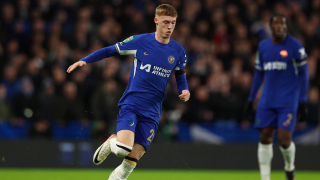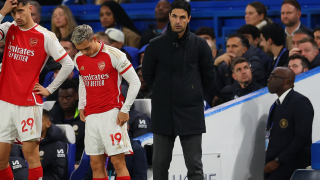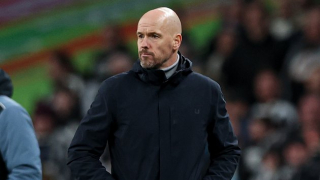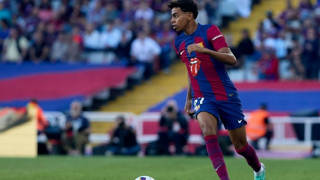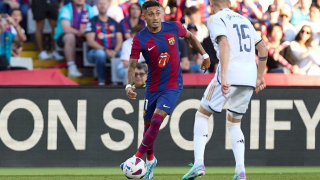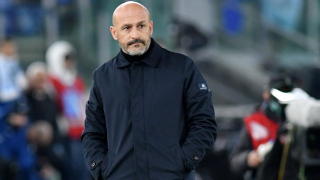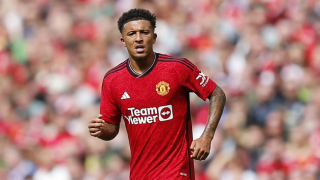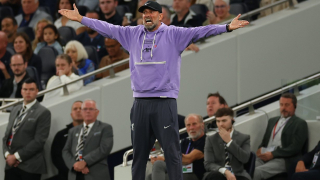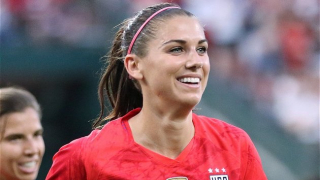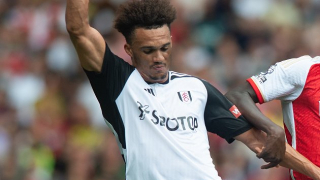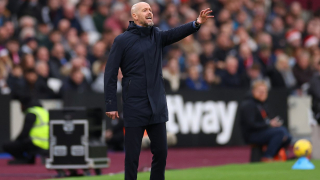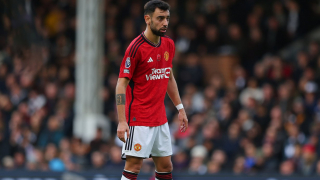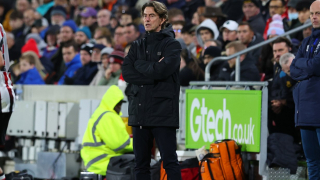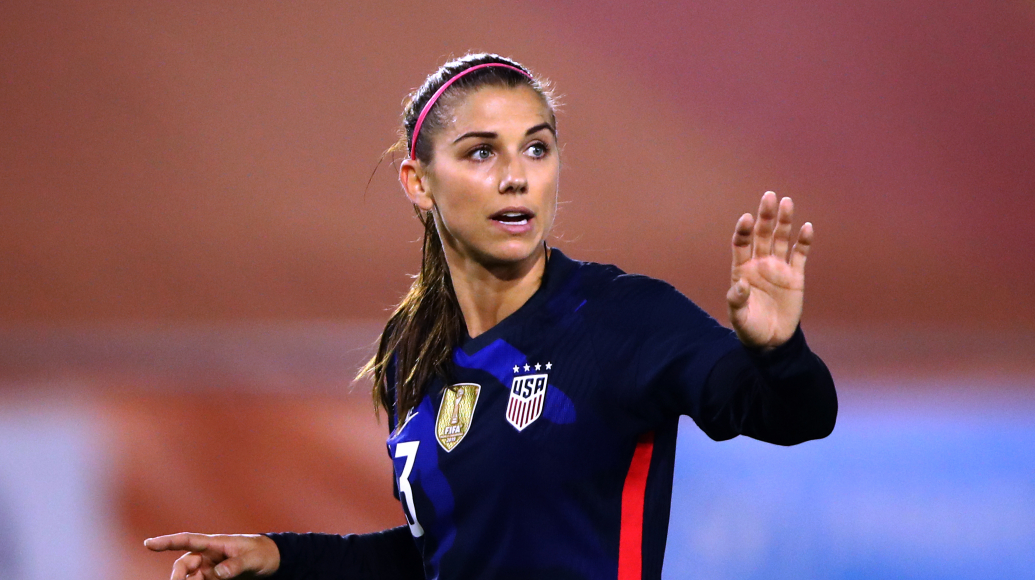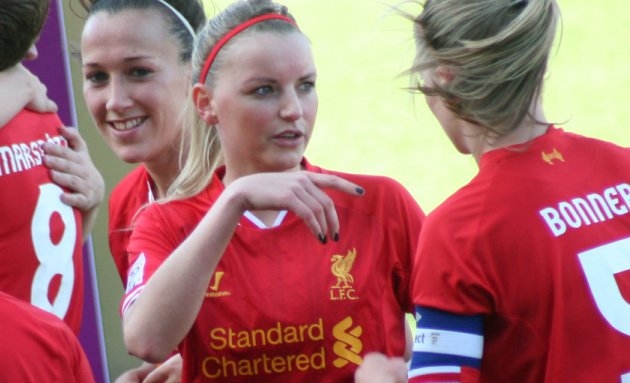This week, we review the recent FIFA survey of women's leagues and clubs around the world entitled: Setting the Pace—FIFA Benchmarking Report: Women's Football. We also have the final roster announcements for Canada and the U.S. ahead of next month's 2020 Olympic Games Finals in Japan.
Setting the Pace—FIFA Benchmarking Report: Women's Football
Setting the Pace—FIFA Benchmarking Report: Women's Football is an important recent study released by FIFA that was conducted in November 2020 in conjunction with the Deloitte Sports Business Group (see: fifa-benchmarking-report-women-s-football.pdf).
A research questionnaire was sent to 30 national women's leagues and 339 women's clubs in 30 countries in English, French or Spanish. All 30 leagues (100%) and 282 clubs (83%) responded. The survey focused on the following issues/areas:
1) General
2) Sporting
3) Governance
4) Financial landscape
5) Fan engagement
6) Players
7) COVID-19
8) Other Issues
I have worked in market research for the last three decades and have run my own international market research agency—Strategic Research Initiatives in the States—for the past 12 years. I was even brought in by Deloitte as a consultant on an automotive research project and worked with that client for 15 years. I have written and reviewed numerous research studies and I must say this FIFA report is one of the best research reports that I have read in a long time. It is purposeful and includes actionable data that can be utilized to develop strategies to improve conditions for players, clubs and leagues in the future. This survey is particularly a noteworthy accomplishment for FIFA within the sports business field in general, as data from business professionals in other sports/organizations typically focus on historical data—which many times is incomplete—extremely small samples from surveys of sports business professionals or fan surveys—which typically are either not actionable or not utilized in any way after the fact.
The sample size of 282 clubs is very strong for this type of study. For the 30 leagues; some might say that 30 is a statistically minimum number in order to have stable data for analysis and this study just makes that minimum, but that is not always the case and this study is one of those exceptions. The sample size criteria depends on how thoroughly you are representing the population, which in this case is women's top tier leagues around the world. If you figure that about 167 women's national teams around the world are active currently (from the latest June 2021 FIFA ranking) this report represents just under 1 in 5 of those nations; even taking into account the 211 FIFA member federations, this survey is representing 1 in 7 of all those nations. In addition, this report includes most of the major women's national football leagues around the world: Australia, China, England, France, Germany, Japan, Mexico, Russia, Sweden and the U.S. are all represented, with input from most of the top women's leagues that are either fully professional or semi-professional. Some of the countries not included in the original sample would be smaller nations like Aruba, Guam, Sierra Leone, etc. with small amateur local leagues for women. The sample of 30 leagues includes the top five national leagues in Asia, three in Africa, two in Eastern Europe, three in South America, three in CONCACAF plus New Zealand from Oceania. FIFA and Deloitte did a wonderful job on the design and implementation of this research study.
The 30 women's leagues who participated were:
- Argentina
- Australia
- Brazil
- Cameroon
- Chile
- China PR
- Colombia
- Costa Rica
- Denmark
- England
- France
- Germany
- Hungary
- Iceland
- Israel
- Italy
- Japan
- Korea Republic
- Mexico
- Netherlands
- New Zealand
- Nigeria
- Norway
- Russia
- South Africa
- Spain
- Sweden
- Switzerland
- Thailand
- United States
FIFA's President Gianni Infantino wrote a Forward on page 1, setting the table for why the study was done and future uses of the data to support the development of the women's game around the world:
"National club competitions play a key role to sustain the development of the game. Leagues and clubs around the world are experiencing unprecedented interest—with more fans, more players, more media and more broadcasters and sponsors looking to be part of the women's game. As this interest continues to increase exponentially, we need to develop an in-depth understanding of the elite women's football landscape, as well as identify any emerging challenges and opportunities facing clubs and leagues around the world. With this as our focus, FIFA is delighted to present the new FIFA Benchmarking Report: Women's Football. This document has been developed with the aim of supporting our women's football stakeholders to better understand the business of women's football and to maximise its incredible potential. The first of its kind, the report provides a thorough and comprehensive analysis of the elite women's football landscape at national level, thanks to the participation of 30 top-tier leagues and 282 clubs. It examines six key areas: sporting, governance, finance, fan engagement, players and COVID-19-related. We hope and believe this work will become an important reference point in guiding key decisions that shape the further professionalisation of the women's game from both a sporting and business perspective. As this report outlines, whilst challenges remain, the future is extremely exciting for women's football and its potential is immense. By working together, and embracing the challenges and exciting opportunities that lie ahead, I am convinced that we can make women's football truly global."
Regarding takeaways from the report, most readers can really focus on the four page Executive Summary (pages 8-11), which visually is quite well done and builds around some salient findings and brief explanations. For someone working on the business side in women's football, you will want to review this report in its entirety for more depth coverage on key topics to help improve the women's games.
Some insightful findings are:
- "83% of clubs with youth structures have one of these age groups: U-18, U-17, U-16, and 72% of clubs have girls' academies (Page 8)."
From the detailed section which follows the executive summary, a supporting finding was that, "If clubs have more than 100 girls in their youth structure, they average 12 in their first team from their youth [teams] versus 7 from clubs with fewer than 100 players (Page 20)." Again, this is an important finding for youth development people supporting both national sides and leagues.
- "66% of clubs [are] affiliated with a men's team [versus one-third being stand-alone] (Page 9)."
"From league responses, we observe that six leagues have 70% or more of their member clubs that operate as stand-alone structures (Cameroon, China PR, New Zealand, South Africa, Sweden and Thailand) (Page 26)." This is quite interesting that CAF has two leagues with primarily women-only clubs, along with two in Asia, one in Oceania, and only one in Europe—the always progressive Damallsvenskan in Sweden. This finding is in sharp contrast to so many other countries—primarily in Europe and including England, Italy and Spain to name a few—that have, in recent years, fully embraced the alliance model with men's teams.
"Stand-alone clubs tend to generate higher revenue than affiliated clubs. Stand-alone clubs generate 110% of the average club revenue in their league compared with 98% for affiliated clubs (Page 26)." This 12 percentage point advantage doesn't sound like much but with league teams on average earning about US$ 500,000 (with a median of US$200,000—Page 34), an additional US$20,000 to $50,000 could be the difference in breaking even, or bringing in a few imports for a season.
For stand-alone clubs, 39% are profitable or break even, compared to 26% of affiliated clubs, with a difference of US$600,000 in average club revenue vs. US$400,000 (Page 26)."
I thought the above information on stand-alone clubs was particularly interesting as more and more professional men's sides around the world add women's teams—either bringing in independent programs as Real Madrid did with CD Tacon or starting fresh as Manchester United did.
- "There is a reliance on subsidies from club ownership or the affiliated men's team Over two-thirds (70%) of clubs reported a financial loss, with 22% breaking even and 8% reporting a financial profit. The most common funding mechanism for club losses was a subsidy from the club owner (42%) and/or a subsidy from the men's team (36%) (Pages 10/40)."
Thirteen percent of women's clubs (30) generate revenue of over US$1,000,000, and these 30 clubs came from 13 different countries (Page 10).
"Six leagues have at least half of their member clubs reporting that they either break even or are financially profitable. Leagues in Denmark, Hungary, Norway and Sweden reported the highest proportion of clubs to achieve this (page 40)." The report explains that none of these four leagues have a salary cap, though the three Nordic countries have a club licensing systems in place along with only 5 of the other 26 national leagues, which gives the federations some oversight and control over wanton spending at the club level.
- On the sponsorship side, which is always one of our frequent topics of interest in this column as it is a crucial component for driving women's clubs and leagues revenue for current and future growth, the report says, "Revenue is higher for clubs that negotiate sponsorship contracts for the women's team only. 72% of clubs reported that they negotiate some of their sponsorship contracts for the women's team only. On average, these clubs achieved higher total revenue (US$500,000 vs. US$400,000) and sponsorship revenue (US$200,000 vs. US$100,000) than those that did not take this approach (Page 9)."
"The average number of sponsor contracts per club is 11 (Page 9)." This author found this number surprisingly higher than expected but five is a league median and a more accurate number to utilize.
"Sponsorship revenue is a key differentiator for both clubs and leagues. The clubs that generate the highest revenue (in excess of US$ 1 Million) raise over half (53%) of it through sponsorship, compared to less than a third (29%) for clubs averaging revenue of less than US$1 Million. Similarly, sponsorship accounts for 70% of total revenue for leagues that generated over US$2 Million compared with 35% for leagues that generated less than US$2 Million (Page 9)." I say 'Amen' to that—there is no better support rationale for the importance of driving sponsorships—particularly lucrative long-term agreements—to women's clubs and leagues.
"On average per club, Japanese (59), Swedish (46), Norwegian (29), US (27), Danish (27) and German (23) clubs reported a significantly higher number of sponsorship contracts than other clubs (5). On average across these leagues (excluding Denmark, 26% and USA, 39%), the proportion of sponsors exclusively supporting the women's team is more than 50%, indicating that clubs can secure sponsorship contracts independently from affiliated men's teams. In total, 72% of clubs reported that they negotiate some of their sponsorship contracts for the women's team only (page 32)."
"Two-thirds (66%) of leagues have a title sponsor. The industry composition of title sponsors is similar to the professional men's game, with over a third (37%) derived from financial services, with other industries such as food and beverages, telecommunication and energy/utilities also present. Leagues with a title sponsor reported higher sponsorship revenue than those without a title sponsor (US$2.2 Million vs. US$1.8 Million) (page 32)." Leagues can do a lot with that $400,000 average difference and pricing should be made a premium for this signature sponsorship agreement.
- We have written about players having to leave the game for financial reasons, which is very common in the U.S., even with the fully professional NWSL. FIFA's report looked at this issue and found, "Over half (58%) of clubs assist players with developing post-playing career options. Some of the most common forms of assistance provided by clubs include training to become coaches or to fulfil administrative roles, access to further education, internships and mentoring opportunities (Page 11)." Some clubs use their professional networks to connect players to sponsors and partners and to build their skills for life after football, but we would like to see this activity expanded much more and be handled in a systematic manner across clubs.
There are many quite informative and interesting charts and tables as well, including a 12 month time line of the football calendar for all the national women's leagues in the 30 countries that participated in the survey (Pages 4-5) as well a decade timeline dating back to the 1970's as to when each nation's women's league was established (Pages 6-7). There is extensive information on player wages, benefits and resources. In addition, Pages 66-95 has one page with summary information on each of the 30 countries, including the number of clubs in the league, the number of teams affiliated with a men's team, average club revenue and sources as well as average costs, the percentage of head coaches with a pro license, etc. We will feature just two of these data points in the table below, for which there some huge gaps, particularly between the U.S., top European nations in women's football—such as England and France—and nations in Africa, Asia and South/Central America. Some of this information is new and has not been collected before; this provides is an important benchmark in monitoring the growth of the game globally.
Currently China PR and Japan's women's club have average club revenue over US$1 Million—though NWSL teams information were not reported and would be included in the $1 Million plus category. The lowest average club revenues were in Thailand (US$24,000), Costa Rica (US$40,000), New Zealand (US$57,000) and Colombia (US$65,000). On the attendance side, 15 countries' women's leagues averaged 500 or fewer fans a game, with the U.S. (the NWSL) above 7,000—this was for 2019 and pre-COVID figures—with Nigeria a surprising second (3,000), followed by China (1,840) and Japan (1,340). In Europe, we expect post-COVID that England will build on its lead (996) over Sweden (900), France (897) and Germany (833). All credit to Sweden's Damallsvenskan who, for over a decade was the highest drawing league in Europe—dating back to when Marta first joined Umea in 2004—on much smaller budgets and continues to play a huge role globally with a stable league attracting players from around the world. We would expect Spain (749) and Italy (500) to also grow substantially in attendance over the next few years, as more men's clubs invest in teams and their respective national teams remain a top 4-8 threat in major tournaments.
Average Club Revenue Average League Attendance
(Per game for 2019 or 2018/19 season)
Argentina NA 300
Brazil US$ 309,000 400
Cameroon NA 500
Chile NA 100
China PR US $1,100,000 1,840
Colombia US$ 65,000 NA
Costa Rica US$ 40,000 300
Denmark US$ 207,000 255
England US$ 996,000 996*
France US$ 619,000 897
Germany NA 833
Hungary US$ 152,000 200
Iceland US$ 204,000 217
Israel NA 50
Italy NA 500
Japan US$1,650,000 1,340
Korea Republic US$ 279,000 300
Mexico US$ 259,000 3,000
Netherlands US$ 546,000 NA
New Zealand US$ 57,000 300
Nigeria US$ 103,000 3,000
Norway US$ 869,000 274
Russia NA 350
South Africa US$ 218,000 NA
Spain US$ 628,000 749
Sweden NA 900
Switzerland US$ 319,000 200
Thailand US$ 24,000 75
United States NA 7,383
*The 996 attendance for England was in 2019-20 and was affected by COVID—prior to the pandemic, the attendance average was 3,072
There are some conclusions in the report that are self-evident and really not edifying and border on the tedious, but that is sort of the nature of the beast with market research studies—a part of trying to gain insights though not everything needs to be reported. Some of the points that, "Wages win: league champions tend to have higher player wages" (Page 8), "73% of leagues have champions with higher player wages than other teams in their league" (Page 8), those clubs with "access to training facilities correlates with better league performance (Page 8) and, "In 65% of leagues, teams with coaches who had a higher-tier license outperformed teams whose head coaches had a lower-tier license etc. (Page 8) can really be glossed over.
Overall, this new FIFA report has a tremendous wealth of good detail to analyze and take further for individuals at the club, league and federation level for the future development of women's football.
In future columns, we will feature other information from this report, which is a huge plus for the women's game—we say 'Well done" to FIFA and Deloitte for this groundbreaking study.
Canada and U.S. Name Final Olympic Games Women's National Team Rosters for Japan
On June 23, Canadian national women's team head coach Bev Priestman selected her 18 player squad, plus four alternates, for the 2020 Olympic Games Final Squad next month in Japan.
Twelve players were part of the first Canadian Olympic team to win back-to-back medals at a summer Olympic Games in more than a century (in 2016): Janine Beckie, Kadeisha Buchanan, Allysha Chapman, Jessie Fleming, Stephanie Labbé, Ashley Lawrence, Nichelle Prince, Quinn, Deanne Rose, Desiree Scott, Christine Sinclair, and Shelina Zadorsky. Goalkeeper Kailen Sheridan traveled to Rio in 2016 as an alternate, while Vanessa Gilles, Jayde Riviere, Julia Grosso, Adriana Leon, and Evelyne Viens will be participating at their first Women's Olympic Football Tournament.
Ten of the 18 players are based in the U.S.—seven in the U.S. and three with American colleges—with four based in England, three in France and one in Sweden.
In addition to the roster of 18 players, four alternates were named who will travel and train with the team and will be available in case of injuries to the 18-player roster including goalkeeper Erin McLeod, Jordyn Huitema, Sophie Schmidt, and Gabrielle Carle.
The surprise here is Sophie Schmidt, who has been a Women's World Cup (4 events) and Olympic Games Finalist (3 times) regular squad member since 2007/2008, is only an alternate for Japan. Jordyn Huitema (20) of PSG was also not part of the core 18 even though she was on the 2019 WWC Finals roster, but she lost out on the numbers game, with Olympic Games rosters 5 player less than for a Women's World Cup.
Canada 2020 Olympic Games Finals Roster—Photo Courtesy Canada Soccer Federation.
CANADA ROSTER
GK- Stephanie Labbé | SWE / FC Rosengård—SWE
GK- Kailen Sheridan | USA / NJ/NY Gotham FC—USA
CB- Kadeisha Buchanan | FRA / FCF Olympique Lyonnais—FRA
CB- Vanessa Gilles | FRA / FC Girondins de Bordeaux—FRA
CB- Shelina Zadorsky | ENG / Tottenham Hotspur—ENG
FB- Allysha Chapman | USA / Houston Dash—USA
FB- Ashley Lawrence | FRA / Paris Saint-Germain—FRA
FB- Jayde Riviere | USA / University of Michigan—USA
M- Jessie Fleming | ENG / Chelsea FC—ENG
M- Julia Grosso | CAN / University of Texas at Austin—USA
M- Quinn | USA / OL Reign—USA
M- Desiree Scott | USA / Kansas City NWSL—USA
F- Janine Beckie | ENG / Manchester City FC—ENG
F- Adriana Leon | ENG / West Ham United FC—ENG
F- Nichelle Prince | USA / Houston Dash—USA
F- Deanne Rose | USA / University of Florida—USA
F- Christine Sinclair | USA / Portland Thorns FC—USA
F- Evelyne Viens | USA / NJ/NY Gotham FC—USA
ALTERNATES
GK- Erin McLeod | USA / Orlando Pride—USA
FB- Gabrielle Carle | USA / Florida State University—USA
M- Sophie Schmidt | USA / Houston Dash—USA
F- Jordyn Huitema | FRA / Paris Saint-Germain—FRA
U.S. 2020 Olympic Games Final Roster
Also on June 23, Vlatko Andonovski named his 18 player roster for next month's Olympic Games Finals, which include eleven players who were on the USA's roster for the 2016 Olympics in Brazil and 17 players who were members of the USA's 2019 FIFA Women's World Cup championship team.
Two players, forwards Carli Lloyd and Tobin Heath, are on their fourth Olympic Team, with Lloyd tying former captain and 2021 National Soccer Hall of Fame inductee Christie Pearce Rampone for the most in USWNT history. Lloyd, who will turn 39 on July 16 just before the Olympics begin, is the oldest-ever U.S. Women's Soccer Olympian, nearly two years older than Rampone when she played in the 2012 Olympics.
Defenders Becky Sauerbrunn and Kelly O'Hara along with forwards Alex Morgan and Megan Rapinoe will be going to their third Olympic Games Finals.
Defender Crystal Dunn, midfielders Lindsey Horan and Julie Ertz, forward Christen Press and goalkeeper Alyssa Naeher make their second Olympic Teams but aiming for their first Olympic medals.
The first-time Olympians are defenders Abby Dahlkemper, Tierna Davidson and Emily Sonnett, midfielders Samantha Mewis, Kristie Mewis and Rose Lavelle and goalkeeper Adrianna Franch. Kristie Mewis is the only squad member going to Japan who was not on the 2019 Women's World Cup winning team.
2020 U.S. Olympic Women's Soccer Team Roster by Position:
GOALKEEPERS (2): Adrianna Franch (Portland Thorns FC), Alyssa Naeher (Chicago Red Stars)
DEFENDERS (6): Abby Dahlkemper (Manchester City/ENG), Tierna Davidson (Chicago Red Stars), Crystal Dunn (Portland Thorns FC), Kelley O'Hara (Washington Spirit), Becky Sauerbrunn (Portland Thorns FC), Emily Sonnett (Washington Spirit)
MIDFIELDERS (5): Julie Ertz (Chicago Red Stars), Lindsey Horan (Portland Thorns FC), Rose Lavelle (OL Reign), Kristie Mewis (Houston Dash), Samantha Mewis (North Carolina Courage)
FORWARDS (5): Tobin Heath (Unattached), Carli Lloyd (NJ/NY Gotham FC), Alex Morgan (Orlando Pride), Christen Press (Unattached), Megan Rapinoe (OL Reign)
Andonovski also named four alternate players that will travel to Japan: goalkeeper Jane Campbell (Houston Dash), defender Casey (Short) Krueger (Chicago Red Stars), midfielder Catarina Macario (Olympic Lyon of France) and forward Lynn Williams (North Carolina Courage). None of them have ever been on a world championship roster at the senior level, but Campbell and Krueger played for the USA in FIFA Youth World Cups.
Surprises in the roster selection include Lynn Williams not making the final 18, though she was always on the bubble and a late miss from the 2019 WWC side as well, but Kristie Mewis (30) beat her out on her flexibility to play multiple positions. Andonovski explained his selection of Kristie Mewis, "For Kristie, she is a product of NWSL. She played extremely well in the league in the last year and a half or so, earned herself an opportunity. Then after the opportunity was given to her, she took full advantage of it. Every game that she came in, whether it was 5 minutes, 10 minutes, 15 minutes, she maximized that opportunity and continued growing and developing in the league and performing in the league." It does raise the feeling that Andonovski, who coached in the NWSL from 2013 through 2019 and won two league titles, seems to be putting a priority on players developed within the league which is good, rather than just on those who skip NWSL and go abroad, but it will be something that has to be evaluated over time. Also, at forward, Brazilian-born Catarina Macario (21) just ran out of time and both she and Williams should be shoe-ins for the 2023 WWC along with forwards Midge Purce (NJ/NY/FC Gotham) and Sophia Smith (Portland Thorns). Macario was not able to play in the U.S. friendly games in Europe in April because of a club COVID quarantine which hurt her. When asked about her, Andonovski explained, "Catarina is an exceptional player but other players were more ready than her for the Olympics. The fact that she's an alternate will give her the experience necessary to see what it takes to compete on [the] world stage. We expect her to be a main figure on this team for a long time."
Eight of the 10 NWSL clubs are represented on the 18 player roster, with only the Kansas City NWSL and Racing Louisville without a player. Portland Thorns FC lead the way with four players, followed by the Chicago Red Stars with three and OL Reign FC and the Washington Spirit with two each. NJ/NY Gotham FC, the Houston Dash, the Orlando Pride and the North Carolina Courage have one player each. Tobin Heath and Christen Press are currently without a club after playing in England this winter—though their rights are held by Racing Louisville although rumors have swirled for months that they will end up with Angel City FC in Los Angeles for the 2022 season—and Abby Dahlkemper is still with Manchester City of the WSL.
Tim Grainey is a contributor to Tribal Football. His latest book Beyond Bend it Like Beckham on the global game of women's football. Get yours copy today.
Follow Tim on Twitter: @TimGrainey

